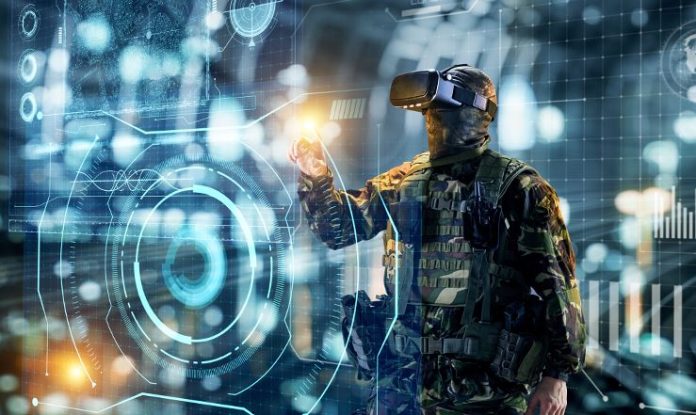5G is a Game Changer for the Military Application
Despite 5G deployment being in its infancy, the promise of high-speed, high-bandwidth and low-latency communications has already cemented its position as one of the core components of future applications. With the US Department of Defense investing heavily in 5G capabilities, it is clear that the military’s uses of 5G will not be limited to the battlefield. Their desire to improve efficiencies across the board are looking to be met with the new 5G applications that are being added to these timing and synchronization products.
There are several ways in which the military capability will be improved thanks to this new and exciting development. Coupled with advances in Artificial Intelligence (AI) and the increased processing power offered by next-generation processors and distributed systems, 5G will enable applications including autonomous vehicles, virtual and augmented reality and smart cities. The sheer volume of information that can be shared due to these capabilities will enable near real-time decision-making in situations that current military communication networks are unable to provide.
With Microchip’s heritage in military timing devices dating back to 1938, we have continually seen technology improve military efficiencies through an array of solutions. Our portfolio is extensive with frequency, timing and synchronization products including SAW filters, crystal oscillators, GNSS-disciplined oscillators and more. We have worked on security, reliability and secure communications used in autonomous weapons to name a few, with our products reducing risk, increasing productivity and speeding up mission time over the years. Therefore, it is clear to us that the advancements being made with 5G technology is vital and when looking to grow the military’s capabilities further it is clear that we should embrace this new technology being developed.
On the Battlefield
When looking to the battfield there are many ways in which 5G applications can improve how efficiently the military work together. Each new development will go work together in creating a more methodical approach with tactical and strategic advantages.
- Battlefield sensors will be used in many forms, providing commanders with continuously updated information. The sensors can be attached to many things including, a camera mounted on a soldier’s helmet, radars mounted on aircrafts, and they can be integrated into a combined intelligence stream. This will help eliminate the chaos and impose order by means of intelligence, communication, and control.
- Augmented reality displays for a pilot in a cockpit or an infantry soldier in a bunker will provide situational awareness that was previously unobtainable. The military will be able to automatically label objects in the pilot’s field of view with information on distance, speed, bearing, and altitiude. Therefore, when a potential threat is picked up by the sensors it will project this information to the pilot or infantry soldier.
- Virtual reality will enable improved operations of remote vehicles for air, land, and sea missions.
Off the Battlefield
The military’s use of 5G deployment is not limited to the battlefield. Military installations will be able to improve efficiencies in several other areas including:
- As showcased by the Department of Defence’s press release, smart warehouse operations with high-speed downloads and sub 15 milliseconds latency, using 380 MHz of spectrum in the mid-band and mmWave are made possible through 5G applications. This development will help with an enhancement in the operation of autonomous vehicles for inventory management, machine learning for inventory tracking, and virtual reality applications to improve workforce efficency.
- According to research by Dr. Paul A. Young, telemedicine will be improved considerably with the help of 5G, providing real-time virtual and digital medical support anywhere in the world. Thereby offering medical providers’ access to real-time data and giving them the ability to make split-second decisions which are critical to healthcare environments.
- Troop transportation will also become more efficient due to the 5G capabilities connecting soldiers, vehicles, command posts, ships, satellites, and planes together with consistent information.
Critical Elements of 5G Networks
Frequency control, timing and synchronization are critical elements of all 5G networks. To support the high-bandwidth and low-latency requirements, high frequency oscillators with low phase noise and narrow band SAW filters are essential to ensure channel spacing.
IEEE 1588 grandmasters are required to distribute and synchronize time across a network to nanosecond precision. Atomic clocks with sub-microsecond accuracies over prolonged Global Navigation Satellite System (GNSS) outages are required for resiliency.
Military 5G applications add an extra layer of complexity to these functional blocks as the devices must survive and operate in harsh environments as well as overcoming obstacles such as high-power jamming signals, due to the wide bandwidths covered by 5G systems. Jammers will have to follow into the millimeter-wave range to jam close-range systems. It is also key that the soldier-mounted devices are light weight, battery operated, and able to survive the extremely rapid temperature, shock, and vibration of an air drop. Lastly, the land, air, and sea vehicle-mounted devices must operate and maintain synchronization in each of the unique vibration and temperature environments presented by these applications.
However, despite these obstables it is clear the new timing and synchronization products with 5G applications have enormous potential and could be the key to improving the military’s communication networks.
Authored Article: David Chandler, Product Line Manager, Microchip Technology Inc








